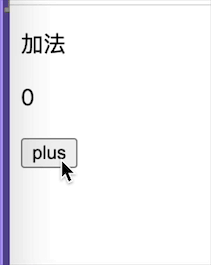基本规范
- 每个文件只包含的一个 React 组件(联系紧密的组件可以使用「命名空间的形式」)。
- 始终使用 JSX 语法,不要使用
React.createElement创建 ReactElement,以提高编写速度、可读性、可维护性(没有 JSX 转换的特殊场景例外,如在console中测试组件)。 - 使用 ES6。
命名规范
-
扩展名:使用
.js作为 React 组件的扩展名; -
文件名:使用大驼峰命名法,如
MyComponent.js; -
组件命名:组件名称和文件名一致,如
MyComponent.js里的组件名应该是MyComponent;一个目录的根组件使用index.js命名,以目录名称作为组件名称;// Use the filename as the component name // file contents const CheckBox = React.createClass({ // ... }) module.exports = CheckBox; // in some other file // bad const CheckBox = require('./checkBox'); // bad const CheckBox = require('./check_box'); // good const CheckBox = require('./CheckBox');// for root components of a directory,// use index.js as the filename and use the directory name as the component name // bad const Footer = require('./Footer/Footer.js') // bad const Footer = require('./Footer/index.js') // good const Footer = require('./Footer') -
引用命名:React 组件使用大驼峰命名法,HTML 标签、组件实例使用小驼峰命名法;
// bad const reservationCard = require('./ReservationCard'); // good const ReservationCard = require('./ReservationCard'); // bad const ReservationItem = <ReservationCard />; // good const reservationItem = <ReservationCard />; // HTML tag const myDivElement = <div className="foo" />; React.render(myDivElement,mountNode);
带命名空间的组件
-
如果一个组件有许多关联子组件,可以以该组件作为命名空间编写、调用子组件。
var MyFormComponent = React.createClass({ ... }); MyFormComponent.Row = React.createClass({ ... }); MyFormComponent.Label = React.createClass({ ... }); MyFormComponent.Input = React.createClass({ ... }); var Form = MyFormComponent; var App = ( <Form> <Form.Row> <Form.Label /> <Form.Input /> </Form.Row> </Form> );
组件声明
-
不要使用
displayName来命名组件,通过引用来命名。// bad export default React.createClass({ displayName: 'ReservationCard',// stuff goes here }); // good const ReservationCard = React.createClass({ // stuff goes here }); export default ReservationCard;
属性
属性命名
- React 组件的属性使用小驼峰命名法;
- 使用
className代替class属性; - 使用
htmlFor代替for属性。
传递给 HTML 的属性:
- 传递给 HTML 元素的自定义属性,需要添加
data-前缀,React 不会渲染非标准属性; - 无障碍属性
aria-可以正常使用。
属性设置
- 在组件行内设置属性(以便
propTypes校验),不要在外部改变属性的值; - 属性较多使用
{...this.props}语法; - 重复设置属性值时,前面的值会被后面的覆盖。
var component = <Component />;
component.props.foo = x; // bad
component.props.bar = y; // also bad
// good
var component = <Component foo={x} bar={y} />;
// good
var props = {};
props.foo = x;
props.bar = y;
var component = <Component {...props} />;
var props = { foo: 'default' };
var component = <Component {...props} foo={'override'} />;
console.log(component.props.foo); // 'override'
属性对齐方式
- 属性较少时可以行内排列;
- 属性较多时每行一个属性,闭合标签单独成行
// bad - too long
<input type="text" value={this.state.newDinosaurName} onChange={this.inputHandler.bind(this,'newDinosaurName')} />
// bad - aligning attributes after the tag
<input type="text"
value={this.state.newDinosaurName}
onChange={this.inputHandler.bind(this,'newDinosaurName')} />
// good
<input
type="text"
value={this.state.newDinosaurName}
onChange={this.inputHandler.bind(this,'newDinosaurName')}
/>
// if props fit in one line then keep it on the same line
<Foo bar="bar" />
// children get indented normally
<Foo
superLongParam="bar"
anotherSuperLongParam="baz"
>
<Spazz />
</Foo>
// bad
<Foo
bar="bar"
baz="baz" />
// good
<Foo
bar="bar"
baz="baz"
/>
行内迭代
- 运算逻辑简单的直接使用行内迭代。
return (
<div>
{this.props.data.map(function(data,i) {
return (<Component data={data} key={i} />)
})}
</div>
);
其他代码格式
注释
-
组件之间的注释需要用
{}包裹。var content = ( <Nav> {/* child comment,put {} around */} <Person /* multi line comment */ name={window.isLoggedIn ? window.name : ''} // end of line comment /> </Nav> );
### 引号使用
- HTML/JSX 属性使用**双引号** `"`;
- JS 使用**单引号** `'`;
```js
// bad
<Foo bar='bar' />
// good
<Foo bar="bar" />
// bad
<Foo style={{ left: "20px" }} />
// good
<Foo style={{ left: '20px' }} />
// JavaScript Expression
const person = <Person name={window.isLoggedIn ? window.name : ''} />;
// HTML/JSX
const myDivElement = <div className="foo" />;
const app = <Nav color="blue" />;
const content = (
<Container>
{window.isLoggedIn ? <Nav /> : <Login />}
</Container>
);
条件 HTML
-
简短的输出在行内直接三元运算符;
{this.state.show && 'This is Shown'} {this.state.on ? 'On' : 'Off'} -
较复杂的结构可以在
.render()方法内定义一个以Html结尾的变量。var dinosaurHtml = ''; if (this.state.showDinosaurs) { dinosaurHtml = ( <section> <DinosaurTable /> <DinosaurPager /> </section> ); } return ( <div> ... {dinosaurHtml} ... </div> );
() 使用
-
多行的 JSX 使用
()包裹,有组件嵌套时使用多行模式;// bad return (<div><ComponentOne /><ComponentTwo /></div>); // good var multilineJsx = ( <header> <Logo /> <Nav /> </header> ); // good return ( <div> <ComponentOne /> <ComponentTwo /> </div> ); -
单行 JSX 省略
()。var singleLineJsx = <h1>Simple JSX</h1>; // good,when single line render() { const body = <div>hello</div>; return <MyComponent>{body}</MyComponent>; }
自闭合标签
- JSX 中所有标签必须闭合;
- 没有子元素的组件使用自闭合语法,自闭合标签
/前留一个空格。
// bad <Logo></Logo> <Logo/> // very bad <Foo /> // bad <Foo /> // good <Logo />
组件内部代码组织
-
不要使用下划线前缀命名 React 组件的方法;
// bad React.createClass({ _onClickSubmit() { // do stuff } // other stuff }); // good React.createClass({ onClickSubmit() { // do stuff } // other stuff }); -
按照生命周期组顺序织组件的方法、属性;
-
方法(属性)之间空一行;
-
.render()方法始终放在最后; -
自定义方法 React API 方法之后、
.render()之前。
// React 组件中按照以下顺序组织代码
React.createClass({
displayName: '',mixins: [],statics: {},propTypes: {},getDefaultProps() {
// ...
},getInitialState() {
// do something
},componentWillMount() {
// do something
},componentDidMount() {
// do something: add DOM event listener,etc.
},componentWillReceiveProps() {
},shouldComponentUpdate() {},componentWillUpdate() {},componentDidUpdate() {},componentWillUnmount() {
// do something: remove DOM event listener. etc.
},// clickHandlers or eventHandlers like onClickSubmit() or onChangeDescription()
handleClick() {
// ...
},// getter methods for render like getSelectReason() or getFooterContent()
// Optional render methods like renderNavigation() or renderProfilePicture()
render() {
// ...
}
});




